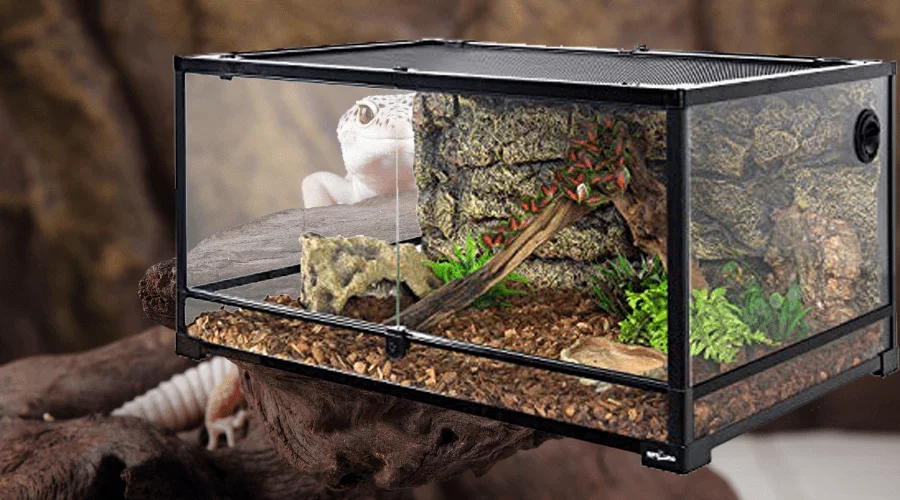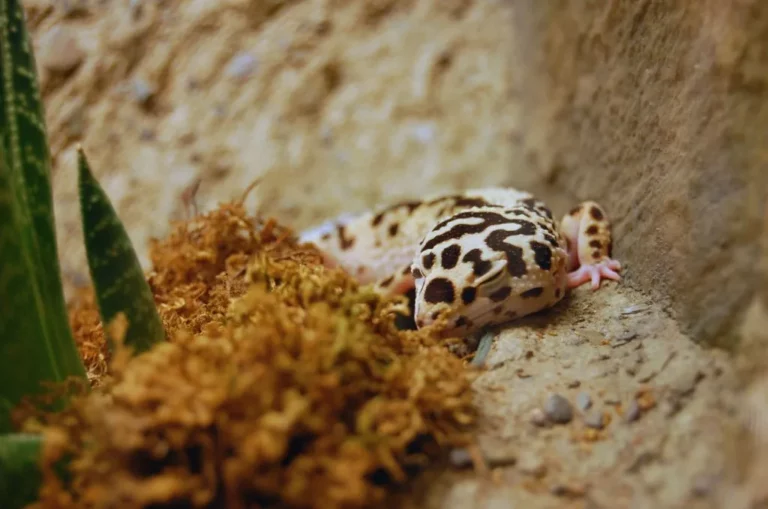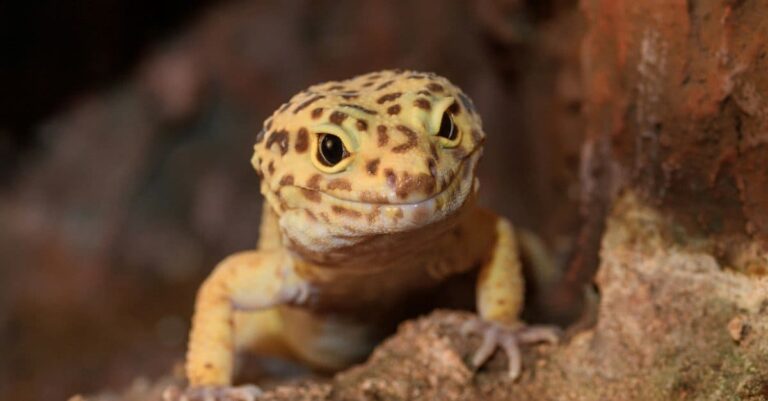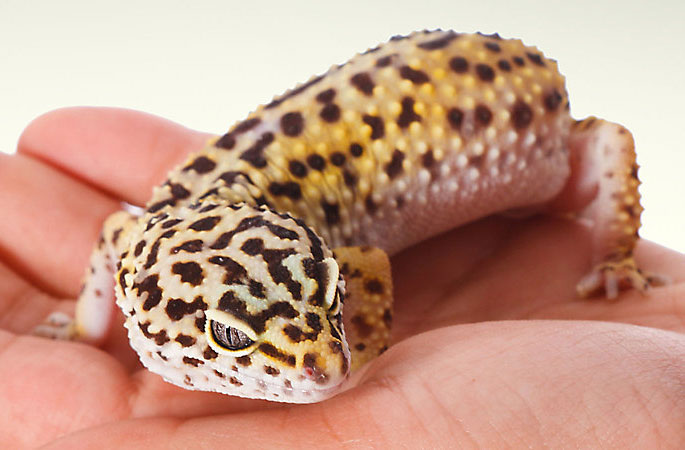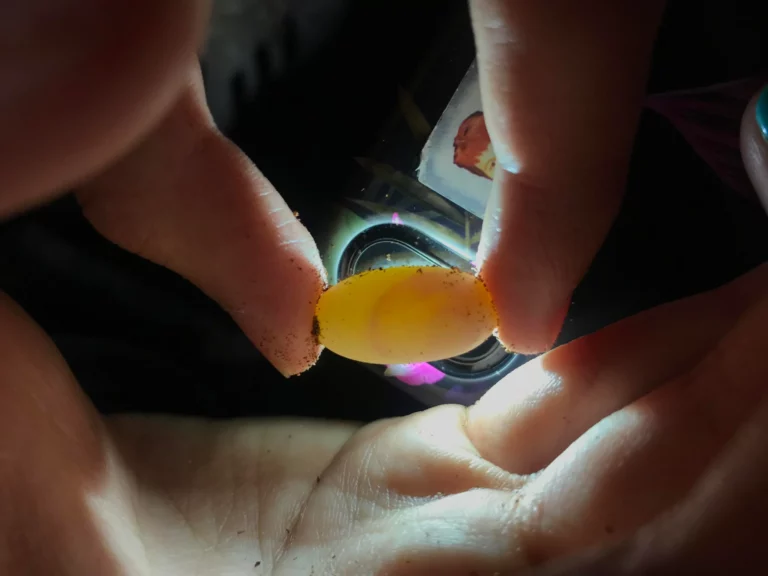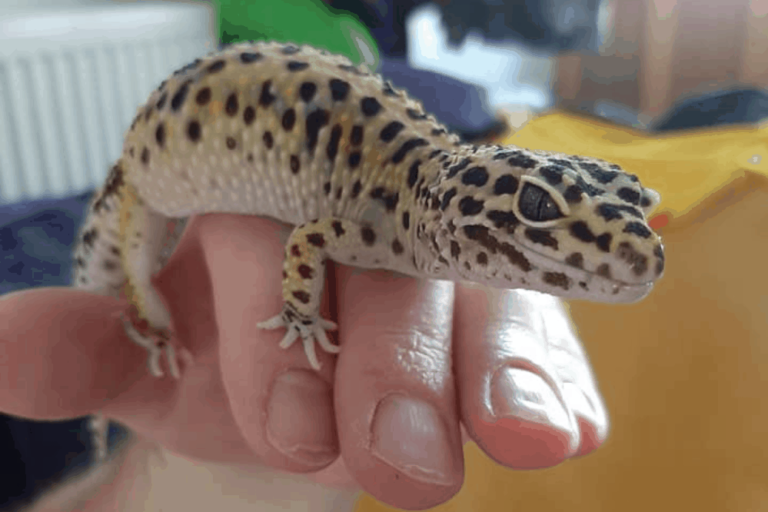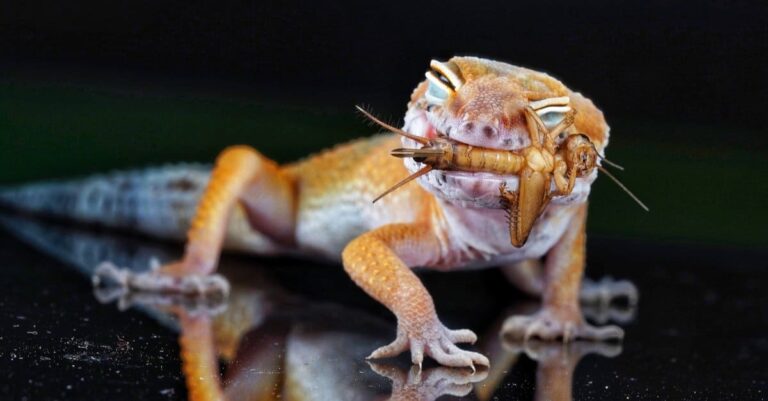How Big of a Tank Does a Leopard Gecko Need? Creating the Perfect Home
I remember the day I brought home my very first leopard gecko, a tiny, curious creature with big, expressive eyes. I was excited and determined to provide it with the best possible care. But as I began setting up its enclosure, one question loomed large in my mind: How big of a tank does a leopard gecko need?
If you’re a new or seasoned leopard gecko enthusiast, you’ve likely pondered this question too.
However, When your gecko is a baby or juvenile, a 10-gallon tank works just fine. But as they grow into adults, will need a bigger space. Aim for a 20-gallon tank at least, with a 30-gallon one being the ideal choice.
So, let’s dive in and create a comfortable, safe, and thriving home for your beloved pet
Types of Leopard Gecko Tanks
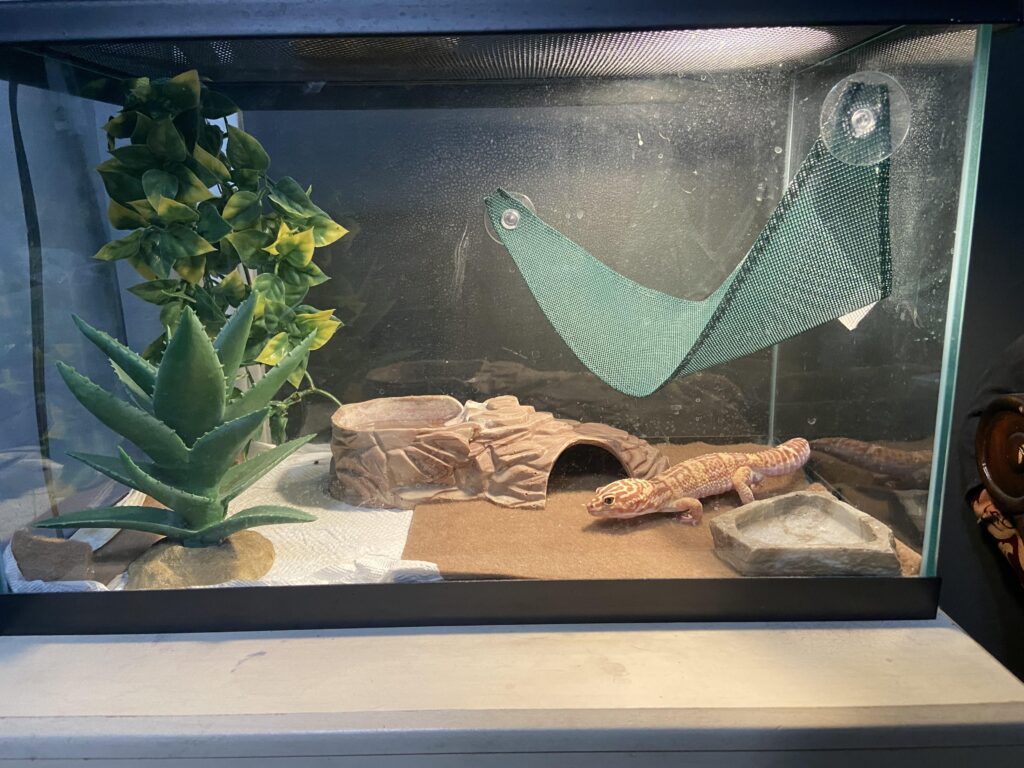
There are four main types of tanks you can use to house your leopard gecko: glass, wood, mesh, and plastic.
Glass Tanks:
- Glass enclosures are the top choice for most leopard gecko owners.
- They’re readily available in various sizes and easy to clean.
- It maintain humidity levels well and offer clear visibility of your pet.
- You can attach items like thermometers and decorations to the glass walls.
- They are lightweight and easy to move when needed.
- However, high-quality glass tanks can be a bit pricey, typically ranging from $100 to $200.
Wooden Tanks:
- Wooden enclosures are visually appealing but less practical for leopard geckos.
- They are harder to find and maintain.
- Prone to damage from water and heat, they require more frequent cleaning to prevent mold and bacteria growth.
- It can cost anywhere from $50 to $300.
Mesh Tanks:
- Mesh vivariums are better suited for climbing reptiles like chameleons.
- Leopard geckos are ground-dwellers, so tall mesh tanks are not ideal.
- Finding a suitable 20-gallon long mesh tank can be challenging.
- It may not retain humidity well and the open space can stress your gecko.
Plastic Tanks:
- Plastic enclosures are the most affordable option, typically costing $20 to $30.
- They may not be as aesthetically pleasing as wooden or glass tanks.
- If you opt for a plastic enclosure, ensure it’s non-toxic and PVC-free.
In summary, glass tanks are often considered the best choice for leopard geckos due to their practicality and ease of maintenance. Wooden tanks are visually appealing but come with more upkeep. Mesh tanks are generally not suitable, and plastic tanks are budget-friendly but may lack in appearance. Your choice should align with your preferences and your gecko’s needs.
| Life Stage | Tank Size Recommendation | Size Range | Weight Range |
| Babies | 10 gallons | 3 to 4 inches (7.5-10 cm) | 6 to 10 grams |
| Juveniles | 10-20 gallons | 6 to 8 inches (15-20 cm) | 15 to 30 grams |
| Subadults | 20-30 gallons | 8 to 10 inches (20-25 cm) | 30 to 50 grams or more |
| Adults | 30-40 gallons | 10 to 12 inches (25-30 cm) | 50 to 80 grams or more |
Choosing the Right Substrate:
When picking a substrate for your leopard gecko’s tank, there are a few key things to keep in mind.
Bioactive Substrate: Consider using a bioactive substrate, as it helps create a natural environment and keeps the tank clean with beneficial bacteria.
Safety: Ensure the substrate is safe to eat if your gecko happens to ingest it. Avoid substrates like sand that could be harmful.
Maintenance: Think about how much time you’re willing to spend on upkeep. Reptile carpet or tiles are easy to clean but may not look as natural. Soil-based substrates require more maintenance but are more natural and stimulating for your gecko.
Aesthetics: Choose a substrate that matches the look you want for your gecko’s tank.
Temperature Setup:
Keeping the right temperature in your gecko’s tank is crucial.
Basking Spot: Aim for 88-92°F (31-33°C) with a cooler side around the mid to upper 70s (~23-25°C).
Nighttime: Night temps can be a bit cooler.
Monitoring: Use digital thermometers on both sides of the tank to keep an eye on temperature.
Heat Sources: Depending on your room temperature, you may need heat mats, lamps, or ceramic heat emitters.
Thermostat: If you use heat mats or lamps, use a thermostat to maintain a consistent temperature and prevent overheating.
Adding UVB Lighting:
Consider placing a 13 to 25-watt UVB bulb on the warmer side of your gecko’s tank. Keep it on for around ten hours each day, and make sure the UVB rating is below 6%.
While they don’t need UVB light, it can be beneficial. Many of them seem healthier and more vibrant with it. Be careful not to make the UVB light too bright, as it could harm their eyes.
Positioning the bulb on one side of the tank creates a natural temperature difference, which your pet will appreciate.
If you choose not to use a UVB light, remember to use a D3 supplement to meet your gecko’s nutritional needs.
Humidity Setup:
Humidity management for leopard geckos is straightforward.
- Day and Night Humidity: Keep it at 30-40% all the time.
- Humid Hide: Provide a humid hide with around 80% humidity for shedding.
- Measuring: Use thermometers with built-in hygrometers to check humidity.
- Adjusting: If humidity is low, a bigger water dish or some moss can help. Consider automated misters for extra control.
Adding Elements and Decoration:
Your gecko’s habitat doesn’t need to be complex.
- Essentials: Include a water dish, a humid hide, and at least one dry hide.
- Variety: Offer multiple hiding spots, rocks, pieces of wood, and plants for a more natural and engaging environment.
- Change Carefully: While some change is good, don’t overdo it. Too much change can stress your gecko, so strike a balance.
FAQs
How big should a leopard gecko’s tank be?
A leopard gecko’s tank should ideally be around 20 to 30 gallons for adults, while a 10-gallon tank is suitable for juveniles.
Is a 10-gallon tank big enough for a leopard gecko?
Yes, a 10-gallon tank is sufficient for a juvenile leopard gecko, but it will need a larger enclosure as it grows.
Is a 20-gallon tank good for a leopard gecko?
Yes, a 20-gallon tank is a suitable size for an adult leopard gecko, providing ample space for comfort and movement.
Is a 5-gallon tank big enough for a leopard gecko?
No, a 5-gallon tank is too small for a leopard gecko, even as a hatchling. It’s essential to provide more space as they grow.
Final words
In conclusion, figuring out the right tank size for my leopard gecko has been a journey of understanding its unique needs at different stages of life. Starting with a 10-gallon tank for my little hatchling was perfect, but as it grew into adulthood, I quickly realized the importance of providing a more spacious 20 to 30-gallon enclosure. This allowed my gecko the room to move, explore, and thrive comfortably.
Remember, the size of the tank isn’t just about space; it’s about creating a safe and stimulating environment for your pet So, whether you’re starting with a small tank or upgrading to a larger one, always prioritize the well-being of your gecko by ensuring they have the right space to call home.

